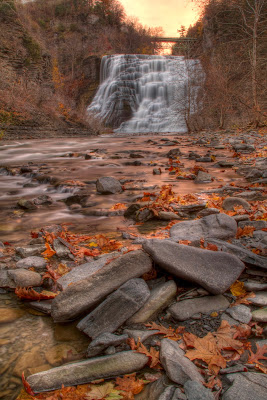I'm just back from a safari encompassing Africa and parts of Asia. Well, not exactly. Actually, I spent a few hours the other day at the Philadelphia Zoo with the self-imposed assignment of photographing animal faces. Under my images are a few tips in case you are interested in taking your own zoo photographs.
_MG_0033+-+OO+vig+Big+Soft.jpg) |
| Snow Leopard Cub |
+OO+sharp+HP+&+Vig+Dk+Glow.jpg) |
| Mother Giraffe with Calf |
+JPEG-_MG_9993+-+Version+2.jpg) |
| Black and White Colobus Monkey an Baby |
+OO+Sharp+&+Vig.jpg) |
| Red Panda |
+_MG_9765+&+OO+Sharp+&+Vig+big+Soft.jpg) |
| Southern White Rhinoceros |
 |
| Bighorn Sheep |
There's a certain amount of luck involved in getting good animal photographs. The animals have to be out and visible, the weather has to be good, and so forth. That said, if you'd like to improve your zoo photographs, here are a few tips: 1) When possible, go at a time when the zoo is not too crowded, such as a weekday morning. 2) Use a telephoto lens for nice close-ups (I use a Sigma 150-500mm telephoto zoom lens); 3) If shooting through glass (like in my snow leopard shot), be careful to angle your shot to minimize the reflection in the glass. 4) Pay attention to the background. If you want your image to look "natural", you want to avoid buildings, fences, or other manmade objects. 5) In most cases, you want a fast shutter speed, as most animals move around quite a bit. For instance, in my giraffe image, I wanted to catch the giraffes with their tongues. I watched the pattern of their behavior so that I could time it just right, and I shot at 1/1000 of a second. 6) Ask the docents for information on anything special at the zoo. A very friendly and informative docent let me know about the snow leopard cubs as well as the gibbon baby. 7) If you're shooting through a mesh fence, use a shallow depth of field to render the foreground fence nearly invisible. For instance, my photograph of the mother white-handed gibbon and baby was shot through a mesh fence, I used f/5.6 at 1/500 second. Also, you may need to turn off your autofocus (which may be "tricked" into focusing on the fence, rather than the animal). 8) Most of all, have fun and enjoy the beautiful, interesting creatures that share our planet.







_MG_2217.jpg)

+HDR+Com+De+&+Top+Sm+Det+&+PS+Ed-+_MG_0857_58_59_60_tonemapped.jpg)
+HDR+Com+3+&+Top+Sm+Det+-+_MG_0710_1_2_3_tonemapped.jpg)
+_MG_0701_2_3_tonemapped.jpg)

+-_MG_1361_2_3_4_tonemapped.jpg)
+HDR+Def+&+Top+Sm+Det+-_MG_1254_5_6_7_tonemapped.jpg)
+_MG_1380_1_2_tonemapped.jpg)
_MG_0033+-+OO+vig+Big+Soft.jpg)
+OO+sharp+HP+&+Vig+Dk+Glow.jpg)
+JPEG-_MG_9993+-+Version+2.jpg)
+OO+Sharp+&+Vig.jpg)
+_MG_9765+&+OO+Sharp+&+Vig+big+Soft.jpg)


+B&W+5th+gr..jpg)
+OO+HDR+Surr_MG_7085.jpg)
+_MG_7140+-+Version+6.jpg)
+PS+Edit+&+OO+Grad+Blue+Filt-+_MG_7700.jpg)

+PS+Edit+&+OO+Orton+-+_MG_8135.jpg)
+HDR+Comp+Deep+%232+&+PS+Ed+-+_MG_8365_6_7_8_tonemapped.jpg)
+HDR+Paint+&+PS+Edit+-+_MG_8779_80_81_82_83_tone+&+OO+Glow.jpg)
+&+PS+Ed+-+_MG_7932_3_4_5_6_tonemapped.jpg)


